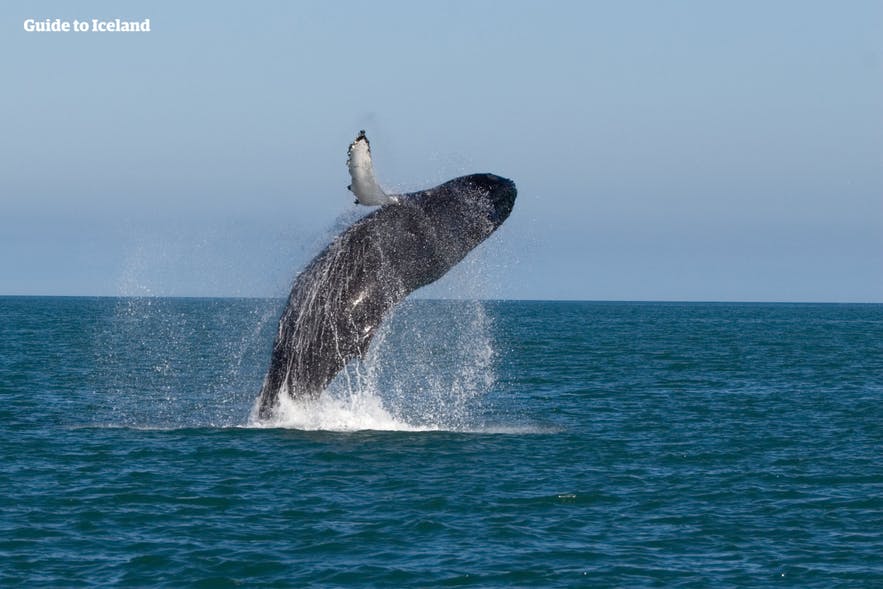Hrísey is an island in the fjord Eyjafjörður of north Iceland of around 200 people.
Widely hailed as 'The Pearl of Eyjafjörður', the beauty and tranquility of Hrísey, along with its interesting history and culture, the hospitality of the locals, its rich birdlife and its fantastic views, have made the island an essential stop for travellers.
Hvorfor du kan stole på innholdet vårt
Guide to Iceland er Islands mest brukte reiseplattform og hjelper millioner av besøkende hvert år. Tekstene våre er skrevet og sjekket av folk som bor her og kjenner landet ut og inn. Derfor kan du alltid regne med ærlige, oppdaterte og pålitelige reisetips.
Explore this area while on a self drive tour in Iceland.
History & Culture
Hrísey has been inhabited since the age of settlement and is mentioned as early as in Landnámabók and the Saga of Víga-Glúms.
From early on, fishing and trade from the island was the lifeblood of the economy, and in the 19th century, Norwegians and Swedes set up a herring salting factory here, providing more work. The locals soon followed suit and developed their own herring industry, reaching its greatest heights between 1930 and 1950.
Overfishing in Icelandic waters led to a steep decline in the fishing industry in the 1960s, and the last fish freezing plant on Hrísey, owned by the Eyjafjörður Co-operative Society, closed in 1999. Today, the locals have diversified their economy and make their living through fishing and tourism.
Among the many beautiful houses in Hrísey is the house of Shark-Jorundur, built in 1885-6, which features an exhibition on shark hunting in Iceland, which reached its peak in the 19th century. This was an industry that was extremely hazardous and claimed many lives but could be highly profitable, as shark liver oil was used for street lighting until petrol took over.
At the house of Alda Halldórsdóttir, built in 1913, there is a regional museum. An old fishing station has been turned into a handworks gallery, showcasing handicrafts such as knitting products, handmade candles, paintings, artefacts made from seashells, souvenirs and more.
Nature lovers should also check out the birdhouse and the lighthouse, which offers a fantastic view of the area.
Nature

The island itself is around seven kilometres (four miles) long and 2.5 kilometres (1.5 miles) wide, and rather flat, only 110 meters (361 feet) above sea level at its highest. The island is comprised of basalt and its upper lair of moraine (which is glacier debris, soil and rock) and it is well vegetated. Among the many plants found on the island are wooly willow, tea-leaved willow, common juniper and dwarf birch.
There is a geothermal heat and hot water supply on the island, and at the seashore there’s a pool with a heat of 60°C. It becomes submerged with sea water during flood.
As noted, the island is a haven for birds and more than 40 species may be found here. Most abundant are ptarmigans, but Hrísey also has the largest breeding colony of arctic terns in Europe and many types of moorland birds live on the island as well.
Transport & Services
To reach the island, you‘ll need to take the ferry Sævar from the village Árskógssandur, on the west coast of Eyjafjörður. The ferry takes off every two hours and the journey takes around 15 minutes. A bus goes from Akureyri to the village. The drive takes around 30 minutes.
Hrísey offers good services, and along with the museums, gallery and lighthouse, it has a bank, a restaurant, a shop and a post office. There are also several options for accommodation on the island.
There are also great walking trails around the island, where you can enjoy the peace and beauty of the Pearl of Eyjafjörður.
Lore
According to legend, it was here in the 18th century that a sorcerer conjured one of a horrible and monstrous ghost. It‘s said that the ghost was created by flaying a calf so it dragged its hide by its tail, and was given the elements of man, cat, dog, air, bird, mouse and two sea creatures so that it was being able to take on all these forms.
Other accounts claim that the monster came to be as the sorcerer placed a dog‘s leg inside the head of a flayed calf and recited evil poetry over it.
The ghost was first conjured to haunt a woman who had spurned the sorcerer in love. It would then grow ever stronger and harder to contain, until the sorcerer could no longer control it.
It is said to have followed its creator’s family for long after, and some claim it haunts the descendants to this day.









